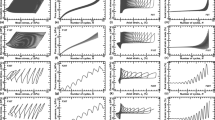With the growing requirements on environmental protection in drilling fluid additives, the traditional anti-collapsing agents are unable to meet the demand. Therefore, improving the environmental protection performance of anti-collapse agents has drawn great attention from scientists. Organic amines are commonly used as anti-collapse agents due to their good anti-collapse properties. In this paper, alkali diamines have been selected as research objects to evaluated the anti-collapse abilities by immersion tests and linear expansion experiments. The experimental results showed that alkyl diamines demonstrate good anti-collapse abilities. However, with increase in the number of C atoms, the solubility of alkyl diamines decreases, and the inhibition by the potassium dichromate method, dilution and inoculation method, and luminescent bacteria method. The result show that the biodegradability of the alkyl diamine anti-collapse agents increase gradually increase in the number of carbon atoms in the chain, while the solubility and biotoxicity decrease. Therefore, the longer the alkyl diamine carbon chain length, the better the environmental performance of anti-collapse agents. Hence, this research provides a guideline for synthesizing new organic amine anti-collapse agents.




Similar content being viewed by others
References
M. Mas, T. Tapin, R. Marquez, Z. Negrin, C. Diaz, and L. Bejarano, “A new high-temperature oil-based drilling fluid,” Society of Petroleum Engineers, Latin American and Caribbean Petroleum Engineering Conference, 21-23 April, Caracas, Venezuela (1999).
D.J. Oakley, G Halliday, R.J. Begbie, and J.B. Turner, “New oil-based drilling fluid reduces oil on cuttings,” Society of Petroleum Engineers, Offshore Europe, 7-10 September, Aberdeen, UK (1993).
S. Young and J. Friedheim, "Environmentally friendly drilling fluids for unconventional shale," Offshore Mediterranean Conference and Exhibition, 20-22 March, Ravenna, Italy (2013).
Y. El-Khazindar, M.R. Darwish, and A. Tengirsek, “Environmentally friendly well testing,” Society of Petroleum Engineers, SPE International Conference on Health, Safety and Environment in Oil and Gas Exploration and Production, 20-22 March, Kuala Lumpur, Malaysia (2002).
C.S. Devine, W.D. Wood, M. Shekarchian, and B.R. Hunnicutt, “New environmentally friendly oil-based stimulation fluids,” Society of Petroleum Engineers, SPE Annual Technical Conference and Exhibition, 5-8 October, Denver, Colorado, USA (2003).
Q. Zhu, Y. Wang, Y. Zhang, Z. Sun, Y. Wei, and R. Wang. “A new generation environment friendly water-based drilling fluid and field applications,” Society of Petroleum Engineers, IADC/SPE Asia Pacific Drilling Technology Conference and Exhibition, 27-29 August, Bangkok, Thailand (2018).
J.C. Klomp, “The application and performance of asphalts,” World Petroleum Congress, 8th World Petroleum Congress, 13-18 June, Moscow, USSR (1971).
R.G Bland, D.K. Clapper, N.M. Fleming, and C.A. Hood, “Biodegradation and drilling fluid chemicals,” Society of Petroleum Engineers, SPE/IADC Drilling Conference, 22-25 February, Amsterdam, The Netherlands (1993).
P. Stepnowski and A. Zaleska, “Comparison of different advanced oxidation processes for the degradation of room temperature ionic liquids,” J. Photochem. Photobiol. A: Chem., 170(1), 45-50 (2005).
K.M. Docherty, J.K. Dixon, and C.F. Kulpa Jr, “Biodegradability of imidazolium and pyridinium ionic liquids by an activated sludge microbial community,” Biodegradation, 18(4), 481-493 (2007).
H. Fiedler, J. Legler, and D. Muir, The Handbook of Environmental ChemistryChlorinated Paraffins, Springer, Berlin (2010), pp. 1-40.
S.M. Lee, W.I. Chang, R. Choia, et al., “Influence of ionic liquids on the growth of Escherichia coli,” Kor. J. Chant Eng., 22(5), 687-690 (2005).
J. Pernak, K. Sobaszkiewicz, and I. Mirska, “Anti-microbial activities of ionic liquids,” Green Chem., 5, 52-56(2003).
H. Nemoto, J. Cai, N. Asao, S. Iwamoto, and Y. Yamamoto, “Synthesis and biological properties of water-soluble p-boronophenylalanine derivatives. Relationship between water solubility, cytotoxicity, and cellular uptake,” J. Med. Chem., 38(10), 1673-8 (1995).
G.F. Whale and T.S. Whitham, “Methods for assessing pipeline corrosion prevention chemicals on the basis of antimicrobial performance and acute toxicity to marine organisms,” Society of Petroleum Engineers, SPE Health, Safety and Environment in Oil and Gas Exploration and Production Conference, 11-14 November, The Hague, The Netherlands (1991).
F. H. Perie, J. L. Seris, and A. P. Martignon, “Biological treatment of drilling waste,” Society of Petroleum Engineers, SPE/EPA Exploration and Production Environmental Conference, 27-29 March, Houston, Texas, USA (1995).
D. Sun, J. Wang, L. Wang, J. Xu, C. Su, and B. Guo, “In-house study on improving the inhibition of drilling fluid by non-ionic organic amines,” Drill. Fluids Complet. Fluids, 26(5), 7-9+87 (2009).
K. Lu, L. Han, T. Shi, W. Qiao, Y. Liu, and D. Zhu, “Study on the effect of organic amine inhibitors on drilling fluid performance,” Drill. Prod. Technol., 35(2), 75-76+96+12 (2012).
D. Li, M. Zhang, D. Yi, Y. Xue, and J. Jia, “Development and performance evaluation of novel organic amine inhibitors for drilling fluids,” Henan Sci., 31(12), 2203-2208 (2013).
C. Cahal, “Biodegradation of different types of surfactants,” Univ. Chem., 28(3), 31-37 (2013).
Acknowledgments
This work was financially supported by the Science and Technology Research and Technology Development Projects of China National Petroleum Corporation2018A-3907).
Author information
Authors and Affiliations
Corresponding author
Ethics declarations
The authors declare no conflicts of interest
Additional information
Translated from Khimiya i Tekhnologiya Topliv i Masel, No. 3, pp. 29–34, May–June, 2020.
Rights and permissions
About this article
Cite this article
Qu, YZ., Tian, KP., Deng, MY. et al. Environmental Protection Performance of Anti-Collapse Agents with Different Hydrophobic Chain Lengths. Chem Technol Fuels Oils 56, 363–372 (2020). https://doi.org/10.1007/s10553-020-01147-1
Published:
Issue Date:
DOI: https://doi.org/10.1007/s10553-020-01147-1




